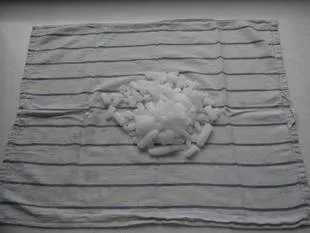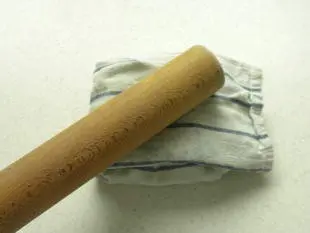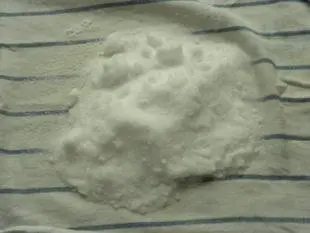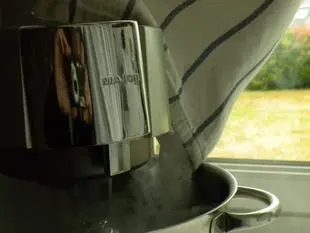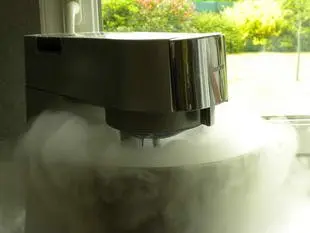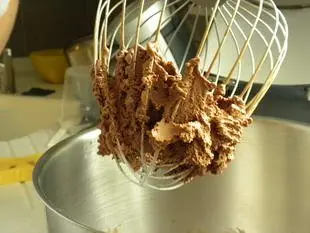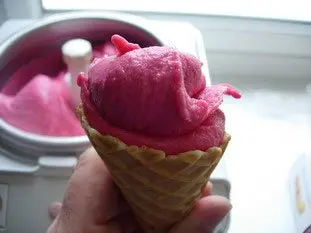General
First and foremost, it's important to distinguish between ice cream and sorbet.- Sorbet is an ice cream made from sugar syrup and usually fruit pulp.
- Ice cream (or "crème glacée") is a frozen preparation based on egg yolks, cream and milk, which is cooked and flavored before or after cooking (typically, a custard to which fresh cream is added).
Sorbets
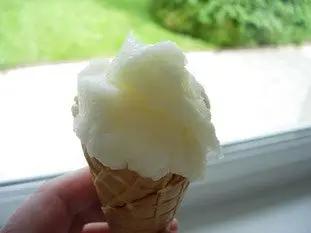
Sorbet recipes, like pear sorbet are extremely simple: you need 50% sugar syrup and 50% fruit pulp (sometimes it varies a little depending on the fruit), mix and pour into an ice-cream maker, and that's it!
They're easy to make because all their flavour comes from the quality of the fruit you choose. In other words, if you use fruit that doesn't have much flavour because it's not ripe, or is industrially produced, you'll get a mediocre sorbet. On the other hand, if you use good fruit, you'll have an excellent sorbet. For example, if you make a strawberry sorbet using "Gariguettes" or "Mara des bois", it will be incomparably better than a sorbet made with supermarket Spanish strawberries bought in March.
The cold-warm contrast is quite striking and delicious. The trick, to compensate for the absence of syrup, is to add a lightly beaten egg white. See the sorbet recipes on this site for more details.
Ice cream
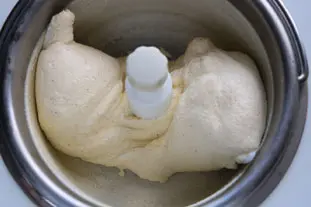
This is a little more complicated to make, because there are more ingredients and the preparation has to be cooked.
The basic recipe is a custard, flavored to taste (pistachio, chocolate, etc.), to which liquid crème fraiche is added at the end of cooking.
Preparation tips
- It's imperative that your ice cream or sorbet is cold or very cold when you put it in the ice cream maker, to facilitate setting. So when you've finished your ice cream or sorbet, put it immediately into the fridge in a sealed bottle, for example. Tip: you can also put it in the freezer to keep it really cold (but be careful not to freeze it completely).
- For ice cream, you can prepare it the day before and leave it overnight in the fridge. Then freeze for 30 minutes before churning.
- For sorbet, try to avoid this, as pureed fruit quickly loses its taste and vitamins. So it's best to blend as late as possible, then freeze for 30 minutes before blending. There's also the fact that fruit preparations quickly oxidize: an apple or pear sorbet that's brown instead of white or a little yellow is much less appetizing... So remember to systematically add lemon juice to the preparation to limit the damage, or even better, a pinch of vitamin C.
Turbining
This is the process of placing the preparation in an ice cream maker to transform it into ice cream or sorbet.In principle, there's nothing special to do, but here are a few tips:
Choosing the right ice cream maker is vital
You absolutely need one that is at least "cold accumulation", i.e. with a part that you store in the freezer at least 36 hours in advance, and that you take out just when you're ready to churn.The cold part contains the preparation, and a motor drives the blades which scrape the edges where the preparation frosts.
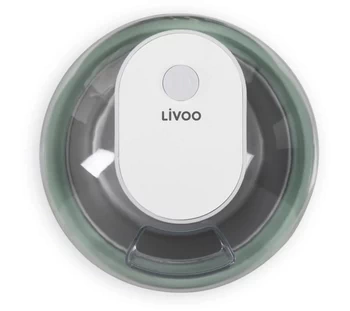
Note: If you've got one of those old-fashioned ice-cream makers that you have to put in the freezer with the wire sticking out, forget it - you won't get anywhere with it.
Top of the line: the turbine
But what's really ideal is the ice cream turbine, a model that has its own cold production unit, so there's nothing to put in the freezer in advance, and a constant, permanent supply of cold.But be warned, they don't come at the same price - see my good addresses page.
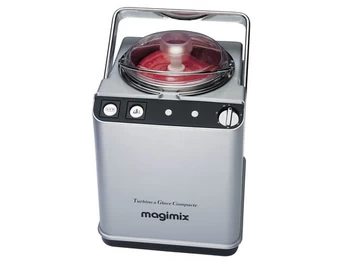
All right, it costs an eyeful, but in the final analysis, given the use you're going to make of it and the satisfaction it brings, it's an excellent investment.
Operation is a little surprising the first time: you have to prepare brine (a saturated solution of salt) and pour a dose (dosette supplied) into the turbine before placing the tank in it and screwing on the blade.
The brine is there to ensure good thermal contact between the cold generated by the turbine and the preparation in the tank.
- If you have proceeded as described above, your ice cream should set quickly (30 minutes maximum) and be very smooth. As soon as it reaches the desired consistency, switch off the ice cream maker and enjoy! Your ice cream will never taste better than when you make it.
- If you're having guests over and you've planned an ice cream-based dessert, calculate the time it will take for your ice cream to be turbined just as the dessert is being served. Let's say you turn on the ice cream maker just as you're serving the cheese.
- If you want to preserve it, put it in the freezer in an airtight box. To use it later, take the box out 15 minutes in advance, and put it in the fridge so that the ice cream regains some of its suppleness.
Better than an ice cream maker?
It's important to remember that the faster the ice cream or sorbet is made, i.e. turbinated or "set", the better it is. And that's because during the turbining process, small crystals of water ice form, giving the ice cream a softer texture. So the faster you go, the less time the crystals have to form, and the better the ice.So, can we go even faster than with an ice cream maker?
The answer is "yes", but it requires very special techniques.
Liquid nitrogen
Liquid nitrogen is a curious product: it's a bubbling liquid, liquefied nitrogen gas (a neutral gas that forms 3/4 of our air) at -196°C.Obviously, it can't be handled like water, and a number of strict rules must be observed (gloves and goggles at the very least), as touching nitrogen or getting it on the skin can cause serious burns.
Please refer to the advice provided by l'air liquide. Warning: The author of this page cannot be held responsible for any damage or injury resulting from the use of this product.
Getting hold of this product is not easy for individuals either, so check the yellow pages and search engines. I'd like to take this opportunity to thank a colleague, without whose help these experiments would not have been possible.
Once safety has been respected, let's see what this can do for ice-cream making? Well, quite simply, speed: the ice cream sets almost instantaneously, because the same volume of liquid nitrogen is poured into the basic preparation while whisking vigorously, setting the ice cream in a few seconds with a great release of water vapour.
First, pour your preparation (here for vanilla ice cream) into a metal container.
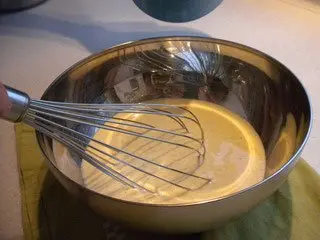
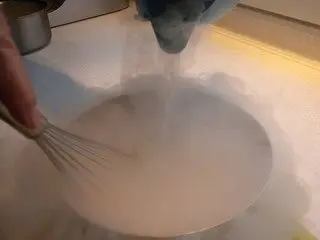

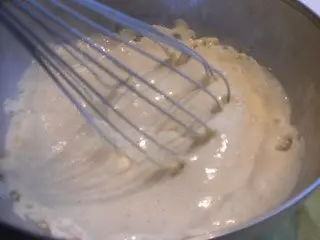

Dry ice
Another solution and another strange product is dry ice, which isCO2 in solid form at -80°C, and which can be used to make ice cream very quickly too.Dry ice comes in the form of large pellets.
